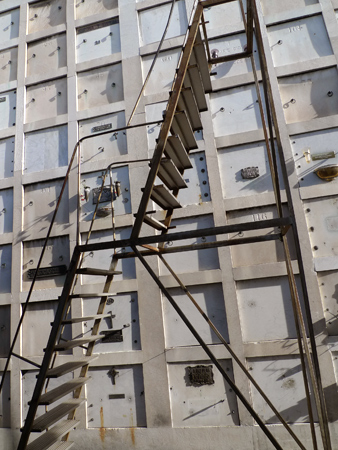
Documenting Recoleta Cemetery in Buenos Aires since 2007

Beginning with the 1680 foundation of Colonia do Sacramento— situated directly opposite Buenos Aires on the Río de la Plata— Portugal tried to exert certain influence in the region. Although a demarcation line between Spanish & Portuguese territory had been agreed upon in 1494, the two nations often disagreed about the imaginary border. But after the Spanish established a Viceroyalty in 1776 with Buenos Aires as the capital, Portuguese claims gradually diminished.
Immigrant families who remained in Buenos Aires founded the Sociedade Portuguesa de Soccorros in 1895… another self-help organization to assist new arrivals & form bonds with the established community. For a small nation like Portugal, there has always been a large amount of emigration to other places.
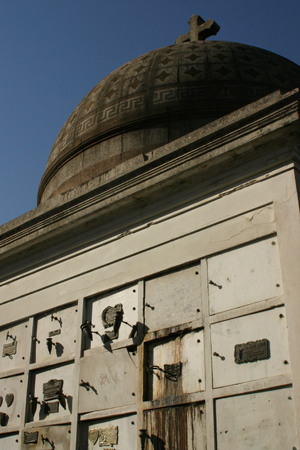
During the period of the Salazar regime, almost 1.5 million Portuguese left but fewer than 13,000 arrived in Argentina… less than 1% of the total. Most settled in the outer suburbs of Buenos Aires or in the city of Comodoro Rivadavia in Patagonia. The blog of Antonio Antunes Canas (in Spanish) has some interesting stories about his family’s immigration to Argentina, compiles lots of statistics & makes a unique point… because of Argentina’s progressive treatment of immigrants, new arrivals never felt the need to return home or maintain a homestead in Portugal. They were here to stay.
The interior is decorated with a statue of St. Anthony of Padua, born in Lisbon:

One plaque of many stands out… Alfonso Afonso was president of the local #60 bus route in the early 1970’s:
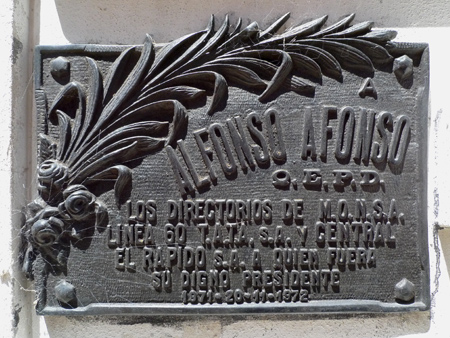
Here’s a preview of things to come:


I know I’ve been promising this forever, but my life from February until now was spinning out of control. Only now do I have the time & energy to finish this project… hopefully making it part of something even larger. Stay tuned for that. Once a few design issues are resolved & the text revised, the only PDF guide to Recoleta Cemetery should be ready by mid-December consisting of approximately 20 to 25 pages.
Naturally it will have sections about history, symbolism, a walking route with descriptions of 70 tombs, the complete story of how Eva Perón finally came to rest there & a few urban myths… basically an abbreviated version of this blog to carry with you while inside:

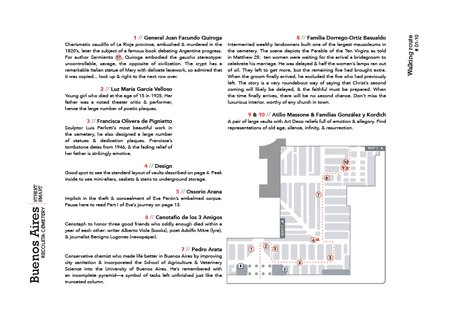
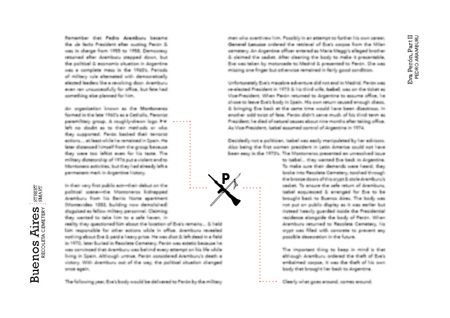
Thanks for your patience!
Read the complete story in the following posts titled “map development”: Part 1, Part 2, Part 3, Part 4, Part 5 & Part 6. Good news! The PDF guidebook is now available.
9 Comments
Born in Buenos Aires in 1822, not only did Luis Saénz Peña have to choose sides during the difficult period of national organization under Rosas, but he also had to choose a career. His parents wanted a doctor in the family while he had a preference for law. Saénz Peña did both. Some of his illustrious classmates in med school were Guillermo Rawson & José María Bosch while he was accompanied in law school by Bernardo de Irigoyen & Rufino de Elizalde.
Only after the expulsion of Rosas did Saénz Peña come into the public eye. In 1860 he formed part of the Convención de Buenos Aires, responsible for a new draft of the constitution & firmly believed that BA should form part of the Argentine Confederation.
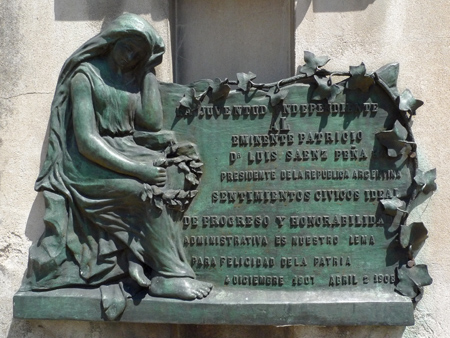
Twenty years later, Saénz Peña held a variety of provincial & national posts —too many to mention here— with the most important being a representative/diputado in the National Congress, then head of the Supreme Court. After the 1890 Revolution, he sided with Roca & Pellegrini… & as a result later became involved in a family scandal.
During 1892 presidential elections, the liberal UCR party thought Bartolomé Mitre would be a sure win while conservatives under Roca’s influence thought it best to continue to support Pellegrini. Some conservatives broke away from Roca & presented Roque Saénz Peña—the son of Luis—as their candidate. Intimidated by the change Roque would bring, Mitre, Pellegrini & Roca formed an alliance to present Luis Saénz Peña as their alliance candidate. Tricky, tricky.
Of course Roque would not run against his own father, so Luis became President. His term is known for modernizing the nation, but eventually Saénz Peña lost Roca’s support, faced a series of uprisings & eventually resigned to let his Vice-President José Evaristo Uriburu take over in 1895.

Leaving public life for good, Luis Saénz Peña quietly passed away in 1907… three years before his son became President. The tomb has been neglected for a long time but remains interesting for its history & a Biblical quote in Latin above the door from Job 19:25:
Leave a CommentScio enim quod redemptor meus vivit et in novissimo die de terra surrecturus sum.
I know that my Redeemer lives, and that in the end he will stand upon the earth.